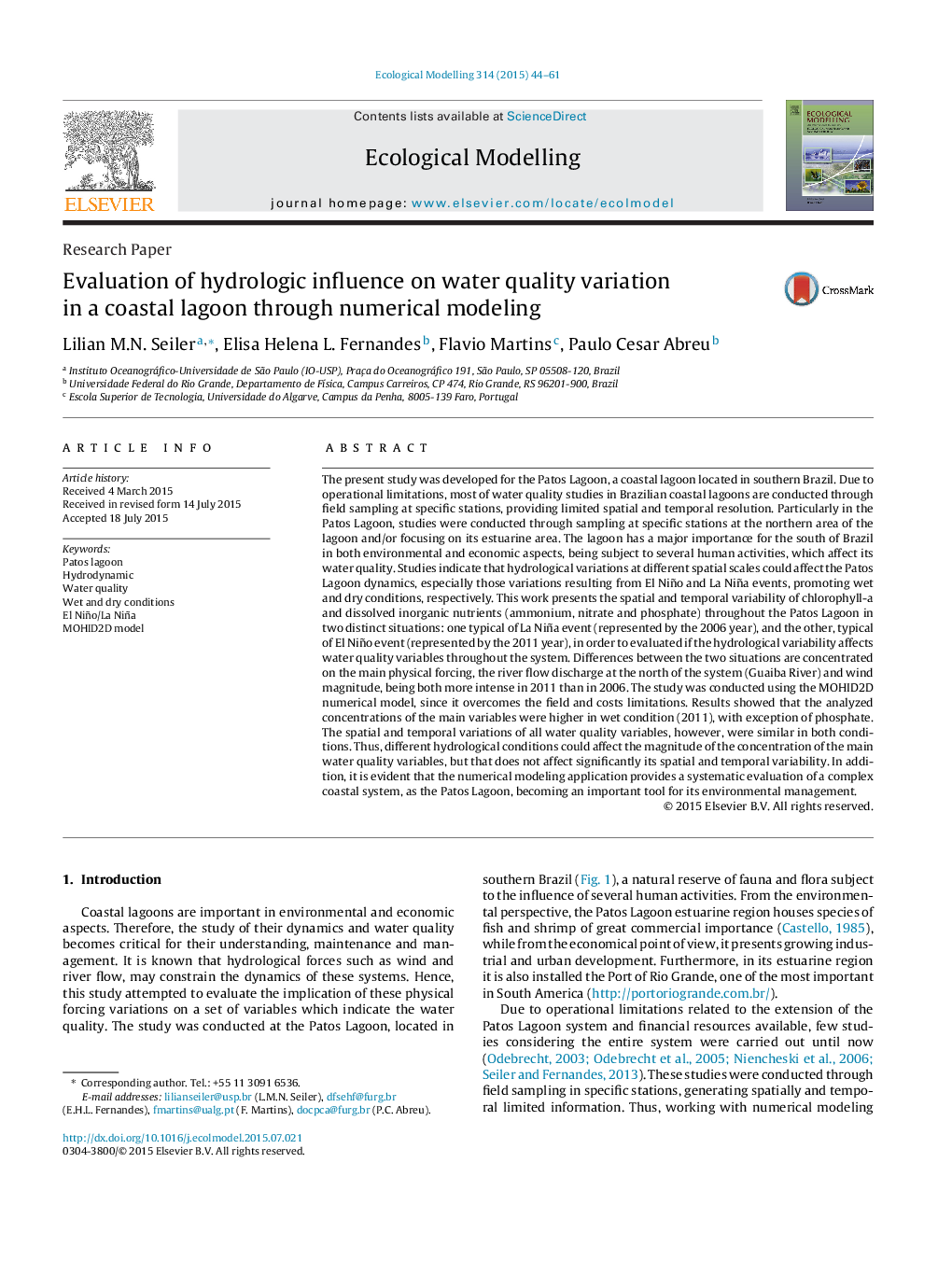| Article ID | Journal | Published Year | Pages | File Type |
|---|---|---|---|---|
| 6296498 | Ecological Modelling | 2015 | 18 Pages |
Abstract
The present study was developed for the Patos Lagoon, a coastal lagoon located in southern Brazil. Due to operational limitations, most of water quality studies in Brazilian coastal lagoons are conducted through field sampling at specific stations, providing limited spatial and temporal resolution. Particularly in the Patos Lagoon, studies were conducted through sampling at specific stations at the northern area of the lagoon and/or focusing on its estuarine area. The lagoon has a major importance for the south of Brazil in both environmental and economic aspects, being subject to several human activities, which affect its water quality. Studies indicate that hydrological variations at different spatial scales could affect the Patos Lagoon dynamics, especially those variations resulting from El Niño and La Niña events, promoting wet and dry conditions, respectively. This work presents the spatial and temporal variability of chlorophyll-a and dissolved inorganic nutrients (ammonium, nitrate and phosphate) throughout the Patos Lagoon in two distinct situations: one typical of La Niña event (represented by the 2006 year), and the other, typical of El Niño event (represented by the 2011 year), in order to evaluated if the hydrological variability affects water quality variables throughout the system. Differences between the two situations are concentrated on the main physical forcing, the river flow discharge at the north of the system (Guaiba River) and wind magnitude, being both more intense in 2011 than in 2006. The study was conducted using the MOHID2D numerical model, since it overcomes the field and costs limitations. Results showed that the analyzed concentrations of the main variables were higher in wet condition (2011), with exception of phosphate. The spatial and temporal variations of all water quality variables, however, were similar in both conditions. Thus, different hydrological conditions could affect the magnitude of the concentration of the main water quality variables, but that does not affect significantly its spatial and temporal variability. In addition, it is evident that the numerical modeling application provides a systematic evaluation of a complex coastal system, as the Patos Lagoon, becoming an important tool for its environmental management.
Related Topics
Life Sciences
Agricultural and Biological Sciences
Ecology, Evolution, Behavior and Systematics
Authors
Lilian M.N. Seiler, Elisa Helena L. Fernandes, Flavio Martins, Paulo Cesar Abreu,
